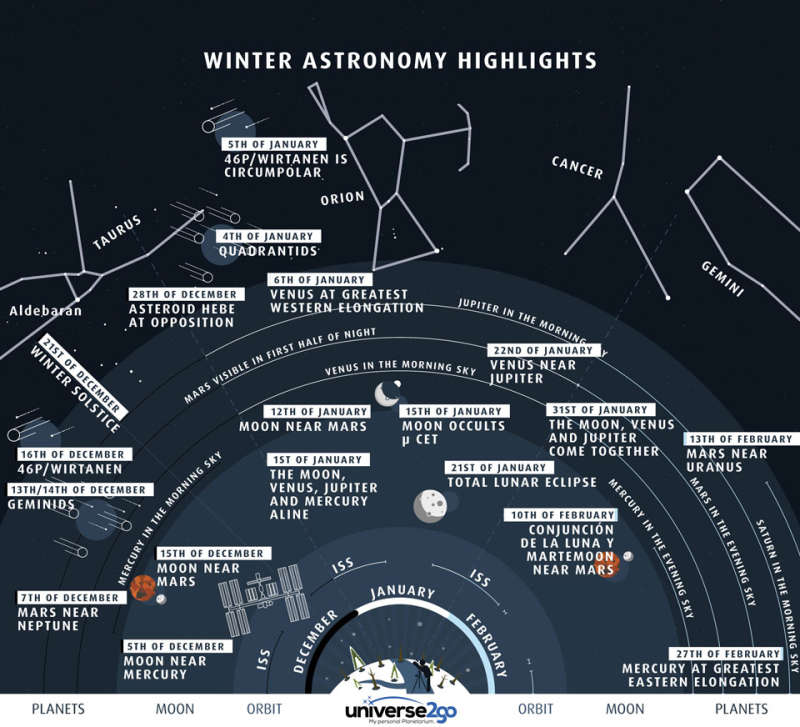Credit & Copyright: Universe2go.com
Explanation:
What can you see in the night sky this season?
The featured graphic gives a few highlights for
Earth's northern hemisphere.
Viewed as a clock face centered at the bottom, early (northern) winter sky events
fan out toward the left, while late winter events are projected toward the right.
Objects relatively close to
Earth
are illustrated, in general, as nearer to the cartoon figure with the telescope at
the bottom center -- although almost everything pictured can be
seen without a telescope.
As happens during any season, constellations appear the same year to year, and, as usual, the
Geminids
meteor shower will peak in mid-December.
Also as usual, the
International Space Station (ISS)
can be seen, at times, as a bright spot
drifting across the sky after sunset.
Less usual, the Moon is expected to
pass nearly in front of several planets in early January.
A treat this winter is
Comet 46P/Wirtanen, already
bright,
will pass only 36 lunar distances from the Earth in mid-December,
potentially making it
easily visible to the unaided eye.
1999 2000 2001 2002 2003 2004 2005 2006 2007 2008 2009 2010 2011 2012 2013 2014 2015 2016 2017 2018 2019 2020 2021 2022 2023 2024 2025 |
Январь Февраль Март Апрель Май Июнь Июль Август Сентябрь Октябрь Ноябрь Декабрь |
NASA Web Site Statements, Warnings, and Disclaimers
NASA Official: Jay Norris. Specific rights apply.
A service of: LHEA at NASA / GSFC
& Michigan Tech. U.
|
Публикации с ключевыми словами:
night sky - ночное небо
Публикации со словами: night sky - ночное небо | |
См. также:
Все публикации на ту же тему >> | |
